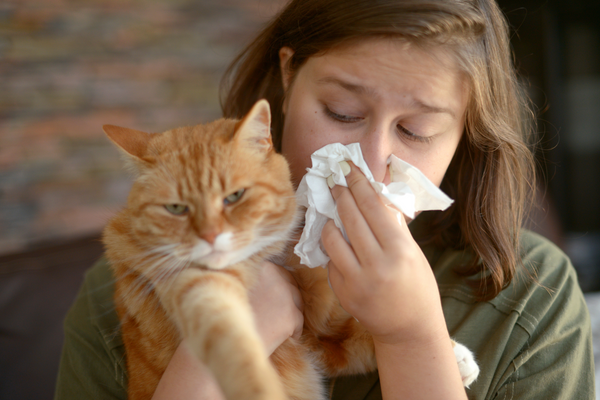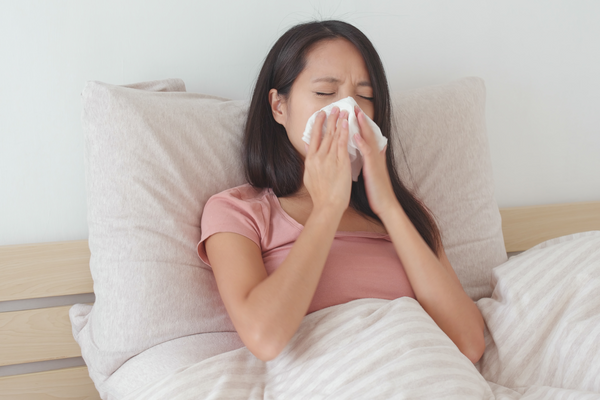Breathe Easy: 6 Easy Steps to Making Your Home "Asthma-Friendly"

For most of us, this past year has involved a lot more time than usual inside of our homes. People living with asthma might see this as a blessing in disguise since many of the common triggers for asthma attacks are found outdoors: air pollution, pollen, and tobacco smoke, to name a few of the usual suspects. But, if all this extra time at home has been making your asthma symptoms worse, it could be due to irritants inside your home. The good news is that it’s usually a lot easier to identify what’s exacerbating your asthma if it’s indoors rather than out. According to the Asthma and Allergy Foundation of America (AAFA), around 25 million Americans – or about 8% of the total population – have asthma. Creating an asthma-friendly home by reducing asthma triggers can make a world of difference to the comfort of yourself and your loved ones.
Removing triggers from the home helps both children and adults with asthma and creates a healthy home environment for everyone. It’s important to note that there are many different triggers, and not every asthmatic has the same ones. For some, a single trigger can set off an asthma attack. For others, several triggers may add up to cause an asthma attack. Here are our top six tips for creating an asthma-friendly home.
1. Make Your Home A Smoke-Free Zone
If you or someone in your household smokes tobacco, it’s best to address that ASAP. The U.S. Surgeon General states that “there is no safe level of secondhand smoke.” So at the very least, make sure that smokers always take it outside.
If you move into a home or purchase a car that was previously smoked in, it’s imperative to remove the carcinogenic residue. A recent San Diego State University study found that three months after smokers move out of a house and nonsmokers move in, tobacco residues remain that can be picked up and ingested by the new residents. The study looked at what’s called “thirdhand smoke”, the pollutants left clinging to walls, carpeting, furniture, and even the dust in a room after a smoker has left moments or even months before. After cleaning and removing dust and grime, use Vital Oxide to completely eliminate any lingering odors from tobacco smoke. Rather than masking odors, Vital Oxide works by oxidation. Vital Oxide eliminates odors caused by tobacco smoke, fire smoke, musty odors, stale cooking odors, and more. Simply spray, fog, or wipe on full-strength and let air dry to provide long-lasting residual deodorizing action. Unlike conventional cleaning products, Vital Oxide doesn’t contain harsh chemicals, synthetic fragrances, or volatile organic compounds (VOCs) and won’t exacerbate asthma symptoms.
In addition to tobacco smoke, smoke from fireplaces and grills can also be hard on the lungs. Staying on top of regular fireplace maintenance and always keeping windows and doors closed while grilling outside can go a long way to reduce air pollution from smoke inside of your home.
2. Control Dust Mites
Did you know? Dust mites are the most common indoor allergen – and they are also a common asthma trigger. But what are they, exactly? Dust mites are microscopic bugs that primarily live on dead skin cells regularly shed from humans and animals. Gross, right? They don't bite or carry diseases, but they can cause serious allergic reactions in asthmatics and others who are allergic to their waste. Dust mites live wherever there is dust – in carpets, bedding, pillows, upholstered furniture, stuffed toys, on surfaces, and more. Here’s how to get them under control:
- Avoid dry dusting. Instead, dust around the home often using a damp microfiber cloth.
- Wash sheets, blankets, and pillows once a week with our Anti-Allergen Laundry Detergent to eliminate mites and their allergens.
- Use washable throw rugs on hard-surface floors, such as hardwood, linoleum, or tile. Once a week, vacuum the rugs (or take them outside and shake) and launder them with our Anti-Allergen Laundry Detergent.
- Have carpet? Aim to vacuum at least once a week using a HEPA-type vacuum. At a minimum, use double-lined vacuum bags to reduce the number of allergens released into the air while vacuuming.
- Use a rinse-and-vac cleaner on upholstery, carpet, rugs, and mattresses to deep clean and remove dust mites. Also, adding a miticide will help to keep dust mites from coming back. Dust mites also thrive in places with high humidity, so make sure you allow plenty of time for thorough drying. A fan will help speed up your drying time.
3. Minimize Outdoor Irritants
Yes, we’re talking about indoor asthma triggers here, but that doesn’t mean that the great outdoors can’t also affect your indoor air quality. For example, avoid opening your windows when the pollen level is high outside. Check your local pollen forecast here.
PS: Houseplants can make super chic decor, but they’re not always ideal for your asthma or allergies. Ask your doctor which indoor plants are okay to keep. Or, try faking it – a bit of decorating with faux greenery is all it takes to get the feeling of plants without the hassle – or the asthma symptoms. Just make sure you’re dusting them on the regular.
4. Reduce Allergens from Pets

They say dogs are man’s best friend, but unfortunately, they can also be foes for an asthma sufferer. And it’s not just dogs – all animals with fur or feathers carry allergens in their saliva and on their skin (dander), hair, or feathers. While there is no such thing as a truly hypoallergenic pet, the good news is that you may be able to coexist with your pets without exacerbating asthma symptoms. By taking a few precautions, you may be able to control the dander sufficiently to avoid asthma symptoms:
- Clear away clutter. Less stuff around the home makes it easier to clean and get rid of pet dander.
- Regularly use an Anti-Allergen Pet Shampoo to neutralize allergens (including pet dander and dust mite allergens).
- When laundering bedding, clothing, throw rugs, and other washable items (including pet beds) use an Anti-Allergen Laundry Detergent to provide relief for asthmatics and allergy sufferers. Our Anti-Allergen Laundry Detergent removes pet dander allergens as well as dust mite waste, mold, mildew, smoke, and pollen on all types of clothing and bedding.
- Limit pets’ access to bedrooms. Airborne pet allergen levels have been found to be much higher in rooms where animals are physically present.
- Regularly use an Anti-Allergen Solution to eliminate allergens from furniture, bedding, rugs, carpeting, upholstery, pet beds, and more. Our Anti-Allergen Solution is 100% biodegradable, made with a plant and mineral-based solution. It’s free of fragrances and other ingredients that can trigger asthma flare-ups.
- Vacuum around the home frequently with a HEPA filter vacuum.
- After vacuuming hardwood and tile flooring, mop with a solution of one part Vital Oxide to nine parts water to sanitize and eliminate any lingering allergens.
Related: Allergic to Your Pet? Easy Tips to Prevent & Control Your Allergy
5. Banish Mold & Mildew
Moisture inside your home can lead to a buildup of mold, which can trigger an allergic asthma reaction. If you’ve got a mold problem, you’ll typically be able to smell it in any damp rooms or areas of your home. The smell of mold has often been likened to meat, wet socks, damp wood, or paper. More than just being unsightly, molds produce microscopic spores that are carried in the air and can be harmful to everyone, but especially for people with asthma. Excess moisture is a result of water leaks, condensation, and excess humidity. If you discover mold inside of your home, first remove the visible mold (seek expert help if needed) and get rid of the excess moisture by fixing all sources of water leaks and increasing ventilation. Use Vital Oxide to get to the root of the problem and to help keep mold and mildew from coming back. Vital Oxide is a proven mold and mildew killer with up to seven months of residual effects. It’s also safe to use on surfaces traditional mold and mildew killers would damage, such as carpeting and marble.
6. Say “No” to Harsh Chemical Household Products
Strong fumes, odors, and scents from household products can trigger an asthma attack. If possible, always avoid using hairspray, perfumes, powders, scented candles, and air fresheners, and just say “no” to fragranced cleaning and laundry products. Instead, use Vital Oxide for all of your cleaning needs, and our Anti-Allergen Laundry Detergent to keep your clothes and linens fresh, clean, and allergen-free.
Have questions about reducing asthma triggers and allergens inside your home? We have answers! The Ecology Works has been leading the way in green cleaning since 1993. We can help you select the products you need to live a better, allergen-free life. Please feel free to Contact Us or message us on Facebook. No question is too small! We're here to help.




